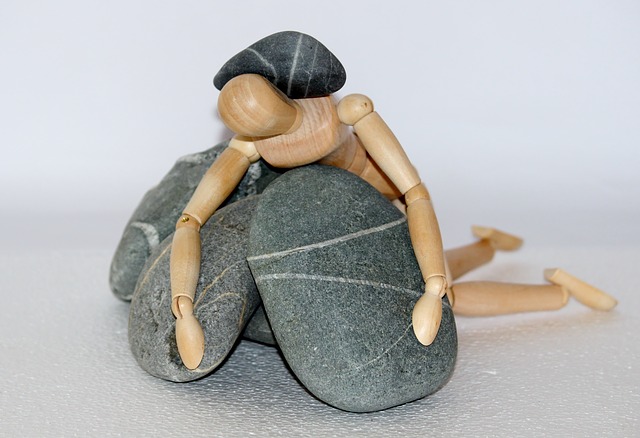Setting the posture
Seated on the floor, spread your feet apart to the maximum.
Place your hands behind you, keeping the thigh, glutei and stomach muscles loose.
Support yourself with your hands and arms and make the spinal column grow longer (head high, shoulders low, the lumbar zone arched, the body’s weight should rest on the pelvis and the upper and back of the thighs. Take the time to set the spinal column and pelvis in place, not forgetting to relax the muscles (thighs, stomach and glutei).

Line your right shoulder up with your right knee; place your left hand on the floor in front of you- as for various twists, seen in the previous number. At your own rhythm, start to lower the right shoulder towards the right knee.
Be careful not to lift the left gluteus off the floor. Make the lumbar column grow; put the chin down lightly into the throat (letting the back or your neck go). Let the muscles stretch out at their own pace. It is the control of the relaxation and tension of the posture that will allow you to bend further forward.

Grab your right ankle or heel with your hands, and then let your elbows drop down onto the floor; spread out the elbows to pose your shoulder on you knee and the right side of your face on the upper right calf. Of course, take your time; otherwise you will compensate for the lack of suppleness in the pelvis by rolling the spinal column, which compresses the chest and thus reduces the breath. Slowly lift your back up, and place the posture on the left leg (same level of difficulty and same length of time).

Then, for the forward stretch, again, do not rush. Let the muscles stretch in the most natural way possible, aiming for the essential work on the rocking of the pelvis (the pelvic muscles pressed on the floor) and the stretching of the lumbar column.
Stop/ hold the posture


There are three postures : bending down to the right, the left and in the center. At least do the right bend, then the left (for the balance of the pelvis) and, if you have time, also do the middle. Don’t start with a posture which is too difficult, work in steps.


For the respiration, like for the muscles, you must take your time. Use (for the right stretch) the left side of abdomen and the thoracic cage to create a good respiration (enjoyable and deep). Count a minimum of twenty breaths on each side, and a bit more in the middle.
To come out of the postures (right, left, front), the longer you stay in them the longer it takes to rectify your back. Use the hero or the demi-hero as a counter-posture.
The effects
- On the skeleton
This posture acts strongly on the pelvis and the coxofemoral articulation. It balances the right and left sides of the pelvis; the sacrum is compressed by the opening, so don’t forget the counter-posture.
If you work well on the rocking of the pelvis, this posture produces a very agreeable sensation in the hips and the lumbar column. It’s the pressure placed on the joints that creates the cleansing, the suppleness and the mobility.
- On the muscles
The rear and internal muscles, the glutei and the lumbar muscles are stretched, which produces their drainage; a minimum of three minutes is necessary for this. The further you can rock the pelvis forward, the more the pressure on the pelvic muscles is efficient for cleaning out this area.
- For the organs
The whole bottom of the abdomen is strongly compressed, which decongests this whole zone and, as well, is very favourable for the sexual glands and the bladder.
- When not to practice this
For women: in the case of abundant or painful menstruation; after eating; after an intense effort; in the case of prosthesis of the hip, the ability to spread the legs is reduced.
You can do the posture but pay attention to put the body’s weight on the glutei and, of course, don’t try to spread your legs.
Counter indication
Chronic sciatica (for some people, stretching can be agreeable, but the recovery of the back almost always poses a problem).
En aucun cas les informations et conseils proposés sur le site Soignez-vous ! ne sont susceptibles de se substituer à une consultation ou un diagnostic formulé par un médecin ou un professionnel de santé, seuls en mesure d’évaluer adéquatement votre état de santé


